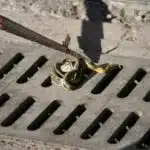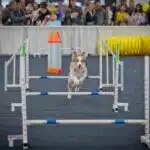Dog washing can be a messy business. Whether you’re using your bathtub or hose outside, there’s always a chance that your furry friend will shake off water and suds all over you and the surrounding area. But fear not, with a little creativity and some basic tools, you can build your own DIY dog washing station. Not only will it make bath time less of a hassle for both you and your pup, but it’ll also give you the satisfaction of completing a fun DIY project.
The benefits of having a dedicated dog washing station are numerous. For one, it saves time and energy in cleaning up after bath time. Additionally, it allows for more controlled water temperature and pressure, making the experience more comfortable for your pet. Plus, having a designated spot for washing your dog means less mess to clean up in other areas of the house or yard. In this article, we’ll go over some essential steps to building your own DIY dog washing station, as well as tips on how to customize it to suit your needs and budget.
Planning Your Diy Dog Washing Station
When it comes to building a DIY dog washing station, it’s essential to start with proper planning. Before you start gathering materials and tools, consider your budgeting tips carefully. You don’t want to overspend on the project as you can easily get carried away with all the bells and whistles available in the market.
Another critical factor to consider during planning is safety considerations. Dogs are unpredictable and can become frightened or agitated during bath time. Therefore, ensure that your dog washing station has non-slip surfaces, reliable restraints, and proper drainage systems to avoid any accidents or injuries.
By following these budgeting tips and safety considerations, you’ll be one step closer to creating a successful DIY dog washing station. In the next section, we’ll discuss choosing the right location for your station and why it’s crucial for its overall functionality.
Choosing The Right Location
When selecting a location for a DIY dog washing station, accessibility should be taken into consideration. The station should be situated in an area that is easily accessible to both the dog and the owner. Proper drainage should also be taken into account to ensure that water does not accumulate around the station and create a slippery mess. Comfort is also a key factor when selecting a spot to build your DIY dog washing station. The station should offer enough room for the owner to move around and should have a comfortable surface for the dog to stand on. Additionally, the station should have a covering to protect the dog from the elements, such as the sun or rain. Finally, the station should be situated away from the main traffic areas in order to minimize distractions for the dog.
Accessibility
When it comes to building a DIY dog washing station, one of the most important factors to consider is accessibility. The right location can make all the difference in how easy and efficient it is to use your station. This subtopic is especially crucial for those who want to create a cost-effective and user-friendly set-up.
Accessibility means that your dog washing station should be located in an area that’s easily reachable and convenient for both you and your furry friend. You’ll want to choose a spot that’s not too far from a water source, such as an outdoor faucet or hose. It’s also essential to take into account the size of the dog and the ease of moving them around in this area.
Another factor to keep in mind when choosing the right location is safety. Make sure that your DIY dog washing station isn’t located near any sharp or potentially dangerous objects. It’s also essential to consider whether there are any potential hazards, such as uneven ground or slipper surfaces, which could cause injury to either you or your pet. With these factors in mind, you can ensure that your DIY dog washing station will be both safe and user-friendly, making it a valuable addition to any pet owner’s home.
Drainage
When it comes to creating a DIY dog washing station, choosing the right location is critical. In our previous subtopic, we discussed how accessibility and safety are two essential factors to consider when selecting the perfect spot. Now, let’s delve into another crucial aspect of location: drainage maintenance.
Drainage is an essential element to consider when building your dog washing station. Proper drainage ensures that water does not pool in one area and create a breeding ground for bacteria or become a slip hazard. Therefore, you’ll want to choose an area that naturally drains well or consider installing a DIY drainage solution.
There are several DIY drainage solutions you can use, depending on your budget and available resources. One option is to install a perforated drainpipe underneath the washing area that allows water to filter through and distribute evenly. Another option is to create a slight slope in the concrete slab or decking material towards the nearest drain or garden bed. Whichever method you choose, make sure that it’s easy to maintain and keep clean so that your dog washing station remains hygienic and safe for everyone involved.
Comfort
Designing a DIY dog washing station can be a fun and practical project for pet owners who want to keep their furry friends clean and well-groomed. However, choosing the right location is essential to ensure that the station is safe, accessible, and comfortable for both you and your dog. In our previous subtopics, we have discussed how accessibility and drainage are crucial factors to consider when selecting the perfect spot. In this section, we will explore how comfort plays an important role in designing a dog washing station.
Comfort is a critical element to consider when creating a DIY dog washing station. A comfortable setup ensures that your dog feels relaxed and calm during the bath time, making it easier for you to wash them thoroughly without any fuss. When choosing the right location, consider investing in non-slip flooring materials or adding anti-slip mats to prevent your dog from slipping or sliding around during the bath time. Furthermore, designing for accessibility by using ergonomic tools such as sprayers with long hoses can help reduce strain on your back while bathing your pup.
Choosing the right lighting also contributes significantly to creating a comfortable environment for both you and your pup. Adequate lighting not only sets the mood but also helps with visibility during bath time. Consider installing bright LED lights on walls or ceilings of your DIY dog washing station to illuminate every corner of the area adequately. Moreover, having windows nearby can provide natural light that creates an inviting atmosphere while bathing your furry friend. By considering these factors when choosing a location for your DIY dog washing station, you can create a comfortable space that makes bath time enjoyable for both you and your four-legged companion!
Gathering Your Materials
Once you have chosen the right location for your DIY dog washing station, the next step is to gather all the necessary materials. Sourcing materials can be a time-consuming process, but it’s essential to ensure that you have everything needed before starting the project. Make a list of all the items required and do some research on where to find them.
Budgeting costs is an essential aspect of any DIY project, and building a dog washing station is no exception. It’s crucial to set a budget before beginning so that you don’t overspend on materials. Consider buying used or recycled items to save money, but make sure they are still in good condition and safe for use. Additionally, it’s important not to compromise on quality when choosing materials as this could affect the durability of your station in the long run.
To help with sourcing materials and budgeting costs, here are three tips:
- Research online for suppliers who specialize in pet grooming equipment and supplies.
- Check out local classified ads or online marketplaces for second-hand items such as sinks or plumbing fixtures.
- Consider using eco-friendly alternatives such as biodegradable shampoos or natural rubber mats instead of traditional synthetic ones.
Now that you’ve gathered all your materials and set a budget, it’s time to move onto designing your station.
Designing Your Station
When designing your DIY dog washing station, it is important to consider the overall aesthetic of the space. One way to ensure that your station is visually appealing is by selecting a color scheme that complements the existing décor in your home. For example, if your home features neutral colors and natural materials, you may want to incorporate similar elements into your dog washing station. Alternatively, if you prefer bold colors and modern design, you can opt for a more vibrant color scheme.
Another important factor to consider when designing your dog washing station is lighting. Adequate lighting is essential for ensuring that you can see what you are doing while washing your furry friend. Additionally, good lighting can create a relaxing atmosphere for both you and your pup during bath time. When choosing lighting options, be sure to select fixtures that are waterproof and easy to clean.
By carefully considering color schemes and lighting options during the design process, you can create a dog washing station that is both functional and visually appealing. In the next section, we will discuss how to measure and cut the wood needed to build the frame of your station. Remember, taking the time to plan out every detail of your project will result in a final product that meets all of your needs and exceeds your expectations.
Measuring And Cutting Your Wood
Did you know that according to the American Pet Products Association, Americans spent over $95 billion on their pets in 2019? Building a DIY dog washing station can not only help save money but also provide a convenient and comfortable space for bathing your furry friend. To get started, let’s discuss woodworking techniques and safety precautions for measuring and cutting the wood.
Firstly, it is important to measure the area where the dog washing station will be placed. Once you have determined the dimensions, measure and mark the wood accordingly. Before cutting the wood, ensure that you have a clear workspace and that your tools are in good condition. A sawhorse or workbench can provide stability while cutting.
Secondly, use a circular saw or jigsaw to cut the marked pieces of wood according to your measurements. Always wear safety glasses to protect your eyes from flying debris and gloves to prevent any injuries from sharp edges. Additionally, make sure that all power tools are unplugged when adjusting or replacing blades.
Lastly, sand down any rough edges with sandpaper or an electric sander for a smooth finish. Regularly check your work for accuracy throughout this process. Following these woodworking techniques and safety precautions will help ensure that your DIY dog washing station is safe and sturdy.
- Use a carpenter’s square to ensure accurate angles.
- Label each piece of cut wood with its corresponding measurement.
- Double-check all measurements before making any cuts.
- Dispose of sawdust properly to prevent fires or accidents.
Next up: assembling the frame…
Assembling The Frame
Now that you’ve measured and cut your wood, it’s time to assemble the frame of your DIY dog washing station. To do this, you’ll need a few tools: a drill, screws, and wood glue. Before you begin assembling, make sure to take some safety precautions by wearing protective gear such as safety glasses and gloves.
Start by laying out your pieces of wood on a flat surface and arranging them into the shape of your washing station frame. Using your drill and screws, attach the pieces together at the corners to form a sturdy structure. Once these pieces are securely fastened, use your wood glue to reinforce any joints that need additional support.
To ensure that your dog washing station is stable and safe to use, be sure to double-check all connections before moving on to the next step. You can reference the table below for a visual guide on how to assemble the frame:
| Piece | Quantity | Length | Usage |
|---|---|---|---|
| A | 2 | 24″ | Front/Back Legs |
| B | 2 | 55″ | Side Rails |
| C | 1 | 24″ | Bottom Crossbar |
By following these instructions carefully and taking necessary safety precautions, you will have successfully assembled the frame of your DIY dog washing station. In the next section, we will cover adding plumbing components so that you can start using your new washing station in no time!
Adding Plumbing Components
Plumbing installation is a crucial component of building a DIY dog washing station. First, you need to decide on the type of plumbing system you want to use. You can either use a traditional drain system, which involves installing a drain pipe that connects to your home’s sewer line or septic tank, or you can use a gray water system, which recycles used water for outdoor irrigation.
Once you have decided on the type of plumbing system you want to use, it’s time to start waterproofing the area around your dog washing station. This is important because water can easily seep through cracks in the floor and walls and cause damage over time. To prevent this from happening, apply waterproofing techniques such as using waterproof paint or sealant around the baseboards and tiles.
After waterproofing the area, it’s time to install the drain. This can be done by digging a hole underneath your dog washing station where you want the drain to go and then connecting it to your chosen plumbing system. Make sure that the slope of the drain is at least ¼ inch per foot so that water flows smoothly and doesn’t get trapped. With these steps complete, your plumbing components are now ready for use in your DIY dog washing station.
Installing The Drain
Did you know that a leaky drain can waste up to 20,000 gallons of water per year? That’s a lot of wasted water and money! That’s why it’s important to properly install and maintain the drain in your DIY dog washing station.
One of the key elements of installing a drain is ensuring that it is properly waterproofed. There are several waterproofing techniques available, such as using a rubber membrane or applying sealant around the edges. It’s important to choose a method that will effectively prevent any leaks and ensure that water flows smoothly into the drain.
Once your drain is installed, it’s important to regularly maintain it to prevent clogs and other issues. This includes removing any hair or debris that may collect around the drain, as well as periodically flushing it with hot water and vinegar to keep it clean. By taking these simple steps, you can ensure that your DIY dog washing station remains functional and efficient for years to come.
As you move on from installing your drain, the next step in building your DIY dog washing station is attaching your hose. But before we get into that, let’s take a closer look at how you can create an effective hose attachment point without causing any damage to your home’s plumbing system.
Attaching Your Hose
Proper Hose Maintenance is critical when it comes to keeping your dog washing station functional. Before attaching the hose, make sure that it is clean and free from kinks or knots. Regular cleaning of the hose will prevent any blockages, which could cause water pressure issues.
Different Hose Attachment Options are available for your DIY dog washing station, with each option providing different benefits. One popular option is a quick-connect fitting, which allows you to easily attach and detach the hose from the station. This can be particularly helpful if you plan on using the hose for other projects around your home. Another option is a swivel connector, which allows you to adjust the direction of the hose as needed.
When it comes to adding non-slip flooring to your dog washing station, it’s important to consider both safety and comfort for your furry friend. Adding an anti-slip mat or rubberized flooring can help prevent slips and falls in wet conditions while also providing a comfortable surface for your pet to stand on during their bath. With proper hose maintenance and different attachment options available, you can ensure that your DIY dog washing station is fully functional and safe for both you and your furry companion.
Adding Non-Slip Flooring
According to recent studies, over 6 million dogs suffer from injuries due to slips and falls every year. Therefore, installing non-slip flooring in your DIY dog washing station is crucial to ensure the safety of both you and your furry friend. There are many non-slip flooring alternatives available in the market, including rubber mats, vinyl tiles, epoxy coatings, and interlocking floor tiles.
Rubber mats are an excellent option as they provide a high level of traction and are easy to clean. They also come in various sizes and thicknesses, allowing you to customize your dog washing station’s flooring according to your needs. Vinyl tiles are another great option that offers a range of colors and designs, making them an aesthetically pleasing choice for those who want their dog washing station to look stylish. Epoxy coatings are highly durable and resistant to chemicals but require professional installation. Finally, interlocking floor tiles offer easy installation and maintenance while providing a water-resistant surface.
Cleaning and maintaining non-slip flooring is essential to ensure its longevity and effectiveness at preventing slips and falls. It is recommended to sweep or vacuum the floor regularly to remove any debris or dirt that could compromise its slip-resistant properties. You can also use mild soap or cleaning solutions specifically designed for non-slip surfaces when mopping the area.
When considering outdoor stations, it is crucial to choose a type of non-slip flooring that can withstand extreme weather conditions such as rain or snow without compromising its slip-resistant properties. Additionally, outdoor stations may require more frequent cleaning due to exposure to mud or grass stains. Therefore, choosing a material that is easy to maintain will save you time and effort in the long run.
Considerations For Outdoor Stations
To ensure that your DIY dog washing station is durable and long-lasting, waterproofing options should be considered. There are several waterproofing materials to choose from, including epoxy coatings, vinyl flooring, and rubber mats. Epoxy coatings provide a seamless surface that is easy to clean and resistant to water damage. Vinyl flooring is also a popular choice as it is affordable, easy to install, and comes in a variety of colors and patterns. Lastly, rubber mats are slip-resistant and provide excellent traction for dogs but require more maintenance than the other options.
When it comes to maintaining your dog washing station, there are a few important tips to keep in mind. First, be sure to clean up any spills or messes immediately as standing water can lead to mold growth and damage the waterproofing material. Next, regularly inspect the station for any signs of wear or tear and address them promptly before they become larger issues. Finally, consider using non-toxic cleaning products that are safe for both your dog and the environment.
By incorporating these waterproofing options and maintenance tips into your DIY dog washing station project, you can ensure that it will withstand regular use and last for years to come. In the next section we will explore how adding storage space can make your dog washing station even more functional and convenient.
Adding Storage Space
As you continue building your own dog washing station, it’s important to make the most out of the available space. Maximizing space is essential if you want to keep everything organized and accessible. There are several creative organization ideas that can help you achieve this goal.
One way to maximize space is by incorporating storage solutions into your design. Consider adding shelves or cabinets that can hold all of your dog grooming supplies. Wall-mounted organizers are also a great option as they keep everything off the floor and within reach. If you have limited floor space, consider using vertical storage options such as stackable bins or hanging baskets.
Another way to maximize space is by thinking outside the box when it comes to storage. For example, repurpose old crates or pallets to create shelving units for your dog washing station. You can also use tension rods to hang grooming tools or add hooks to the sides of your station to hold leashes and towels. With a little creativity, you can find unique ways to store all of your dog grooming supplies while keeping them easily accessible.
Incorporating smart storage solutions into your dog washing station not only maximizes space but also helps keep everything organized and easily accessible. Once you’ve added all the necessary storage components, it’s time to start customizing your station to fit your needs and preferences.
Customizing Your Station
- When customizing a diy dog washing station, the first step is to choose the right equipment, such as a basin, faucet, and hose, to ensure the setup is safe and effective.
- Installing the station involves ensuring the plumbing is secure and properly connected, as well as setting up the basin and accessories.
- When decorating the station, it is important to select non-slip flooring and surfaces that are easy to clean and maintain.
- The station should also have adequate space for supplies and accessories, such as towels, shampoo and conditioner, and grooming tools.
- Finishing touches, such as artwork and seating, can be added to make the station more inviting and comfortable for both the dog and the owner.
- With careful planning and attention to detail, a custom diy dog washing station can be created that is both attractive and functional.
Choosing The Right Equipment
As a diy dog washing station expert, I know first-hand how important it is to choose the right equipment. Having the appropriate equipment for your custom dog washing station will make all the difference in your dog’s grooming experience. It can also save you time and money in the long run. When selecting equipment, consider both its durability and maintenance requirements.
Equipment maintenance is a crucial factor to consider when choosing the right equipment for your diy dog washing station. You want to ensure that the equipment you select is easy to maintain and clean after each use. This helps prevent any buildup of dirt or bacteria that can be harmful to your furry friend. Regular cleaning also extends the life of your equipment, which ultimately saves you money on costly repairs or replacements.
When building a custom dog washing station, keep in mind that you may need to upgrade your equipment over time. As dogs come in different sizes and breeds, their grooming needs may vary as well. Upgrading your equipment such as changing spray nozzles or adding adjustable height tables can accommodate these varying needs. Whether it’s upgrading existing equipment or investing in better options, staying up-to-date with new technology can enhance your dog washing experience while keeping both you and Fido happy.
Installing The Station
After choosing the right equipment for your custom dog washing station, it’s time to focus on installing the station. Proper installation is crucial to ensure that water pressure and drainage options are working efficiently. You want to make sure that your dog washing station has adequate water pressure to easily rinse off your furry friend. If you live in an area with low water pressure, consider installing a booster pump to increase water flow. On the other hand, if you have high water pressure, install a pressure regulator to prevent damage to your equipment.
When it comes to drainage options, there are several choices available depending on your budget and needs. A floor drain is a common option that requires professional installation but ensures efficient draining of water from the washing area. Alternatively, a simple solution would be using a portable plastic tub with holes drilled at the bottom for easy drainage into a nearby sink or drain. Another option is installing a dry well system that collects and disposes of wastewater underground.
Lastly, before installing your custom dog washing station, consider the location where you will be setting it up. It should be in an area with good ventilation and access to hot and cold water sources. Additionally, make sure there’s enough space for both you and your furry friend to move around comfortably during bath time. With proper installation, your diy dog washing station can provide years of convenience and enjoyment for both you and your four-legged companion!
Decorating The Station
Now that you have installed your custom dog washing station, it’s time to add some personal touches and make it feel like your own. Decorating the station doesn’t have to be expensive or complicated. There are many DIY dog bath accessories and budget-friendly decor ideas that can transform your dog washing area into a stylish and functional space.
One easy way to spruce up your dog washing station is by adding some storage options. Install shelves or hooks on the wall to keep all of your grooming supplies organized and within reach. You can also use baskets or containers to store towels, shampoos, and other essentials. This not only adds a practical element but also helps keep the space clutter-free.
Another decorating idea is to incorporate calming elements into the station. Dogs can get anxious during bath time, so creating a relaxing environment can help ease their stress. Add some plants or soothing colors like blue or green to create a peaceful atmosphere. You can also play soft music in the background or use essential oils to create a spa-like experience for both you and your pup. With these simple decorating tips, you can create a functional yet inviting space for bath time with your furry friend!
Testing Your Station
Once you have completed building your DIY dog washing station, it is important to test the water pressure. Water pressure plays a crucial role in the effectiveness of cleaning your furry friend. If the pressure is too low, it may take longer to wash your dog and rinse off soap properly. On the other hand, if the pressure is too high, it may cause discomfort and injury to your pet. It is recommended to test the water pressure and make adjustments accordingly before using your new washing station.
Another important aspect of washing your dog at home is selecting the right shampoo. There are various types of shampoos available in the market that cater to different needs of different breeds. It is essential to select a shampoo that suits your pet’s skin type and coat condition. Always read the ingredients mentioned on the bottle before purchasing any shampoo as some chemicals can be harmful to pets with allergies or sensitive skin.
In summary, testing water pressure and choosing a suitable shampoo for your furry friend are crucial steps towards achieving optimal results when using your DIY dog washing station. These minor details can greatly enhance both yours and your pet’s experience during bath time. Now that you have ensured everything works perfectly, let’s move on to enjoying this fantastic new addition to your home!
Enjoying Your New Diy Dog Washing Station
Now that you have tested your DIY dog washing station, it’s time to move on to enjoying the benefits of its functionality. One crucial aspect of maximizing functionality is ensuring that your station remains clean and sanitary after every use. This will require a bit of extra effort on your part, but the rewards are worth it.
To maintain cleanliness, start by wiping down all surfaces with a disinfectant spray or wipes. Pay special attention to areas where water accumulates, such as the shower floor and walls. Use a squeegee to remove excess water from these surfaces after each use. Also, make sure to wash any towels or mats used during the grooming process thoroughly.
In addition to keeping your station clean, there are other ways to maximize its functionality. Consider adding storage shelves or hooks for easy access to grooming supplies and towels. You can also install a detachable showerhead for more precise rinsing and washing. By making these small improvements, you can make your DIY dog washing station even more efficient and enjoyable for both you and your furry friend.
- Regularly check and replace any worn-out accessories such as hoses or nozzles.
- Keep a dedicated set of grooming tools within reach at all times.
- Install proper drainage systems to avoid overflow and flooding.
- Choose non-slip flooring materials for safety purposes.
- Set up a drying area near the station for quick post-bath clean-up.
Remember that maintaining cleanliness is an ongoing task when owning a dog washing station. With regular upkeep and simple modifications, you can ensure that your DIY dog washing station remains functional, hygienic, and enjoyable for years to come!
Conclusion
Building a DIY dog washing station can be a fun and rewarding project for any pet owner. By following the steps outlined in this article, you can create a functional and customized space that will make bath time easier for both you and your furry friend. When planning your station, consider factors such as location, materials, and design to ensure that it meets your needs.
One example of a successful DIY dog washing station is that of a family with three large dogs who struggled to bathe their pets in their small bathroom. They decided to build a custom station in their garage using waterproof materials and adding storage space for shampoo and towels. With the addition of a non-slip mat and adjustable shower head, they were able to safely and efficiently wash their dogs without making a mess in their home.
Customizing your DIY dog washing station to fit your specific needs is key to its success. Whether you have one small pup or multiple large dogs, taking the time to plan out your design and gather necessary materials will result in a functional space that both you and your furry friend can enjoy.
Image Credits
- “Dog wash station 😀” by MAGIC PASSION * PHOTOGRAPHY * (featured)

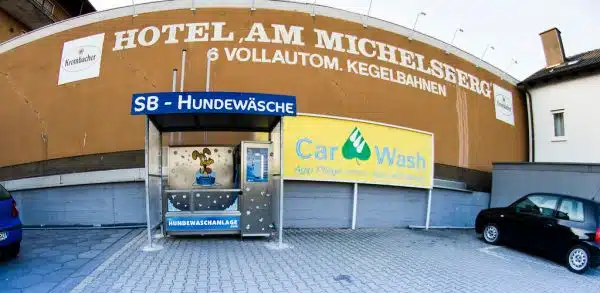
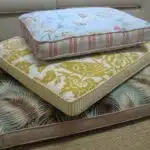
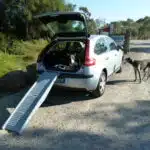






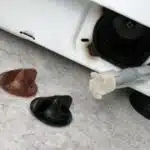





![How To Get Hair Out Of A Bathtub Drain 16 2/365 [Bathtub Drain]](https://green-life.blog/wp-content/uploads/2023/05/cOEu5edpkejq-150x150.jpg.webp)
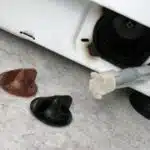
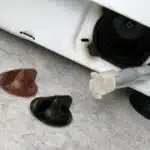
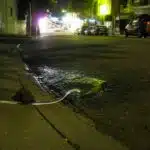
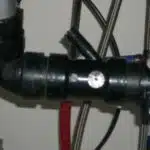
![How To Replace A Bathtub Drain In A Mobile Home 21 2/365 [Bathtub Drain]](https://green-life.blog/wp-content/uploads/2023/05/3ft8KAJsNnjq-150x150.jpg.webp)

